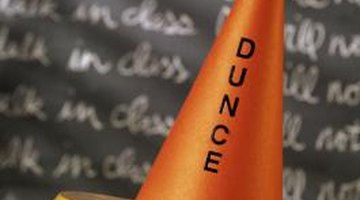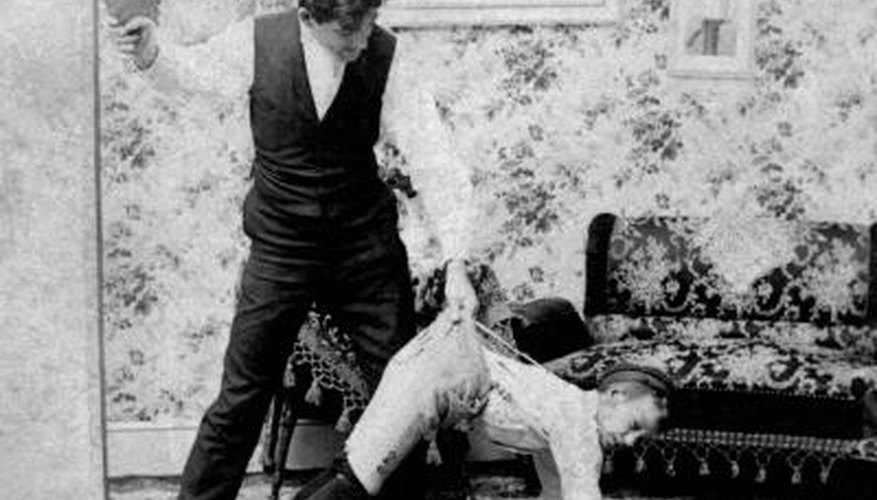Corporal punishment was common in schools for thousands of years as a punishment for bad behaviour. By the early 1900s, most schools had abandoned corporal punishment with the exception of Christian schools and some private schools. In the United Kingdom, corporal punishment was banned in all schools in 1999. In America only 27 states have laws banning the use of corporal punishment.
Strap and Cane

In the late 19th century, hitting children with a bamboo cane became the popular form of punishment. Boys would be struck on their bottoms and girls on the backs of the legs and palms of the hands. In extreme cases, girls also would be struck on the bottom. Leather straps or belts also would be used, while lesser offences were often dealt with by a swift rap on the knuckles with a wooden ruler. Typical punishments handed out were eight strikes for swearing, seven strikes for lying and 10 strikes for card playing. Boys who mistreated girls would receive 10 strikes, girls sneaking into boy's play areas would receive three strikes and boys and girls playing together would receive four strikes.
- In the late 19th century, hitting children with a bamboo cane became the popular form of punishment.
- Leather straps or belts also would be used, while lesser offences were often dealt with by a swift rap on the knuckles with a wooden ruler.
Slipper and Birch
Birching also was used as a form of punishment. This was the practice of gathering birch twigs and using them as a cane or strap was used. Birching was banned in the UK in 1948. The slipper also was used for striking a child on the bottom, although the slipper was usually a sneaker. It was not required to document the use of a slipper in a punishment book as it was for a cane or strap, so it was considered a lesser form of punishment.
- Birching also was used as a form of punishment.
- The slipper also was used for striking a child on the bottom, although the slipper was usually a sneaker.
The Tawse
A tawse is a stiff leather strap with two tails and was universally used in Scottish schools until around the mid 1980s. Usually the child would be struck across the hands, often in front of the whole school. There are reports, however, of children being ordered to bend over a bench to take the strikes on the bottom. In some English schools, the tawse was used well into the 20th century, with the child being struck on the bottom.
- A tawse is a stiff leather strap with two tails and was universally used in Scottish schools until around the mid 1980s.
- In some English schools, the tawse was used well into the 20th century, with the child being struck on the bottom.
Dunce Hat

The dunce hat, also known as the dunce cap or fool's hat, was used as a form of humiliation for less able pupils. This pointed hat, usually made of paper and often inscribed with a large letter D, or the word "dunce," was placed on the head of a pupil who was usually ordered to stand facing the corner of the classroom or to sit on a special stool. This punishment would be used for minor misbehavior, but most commonly for slow-working, underachieving pupils.
